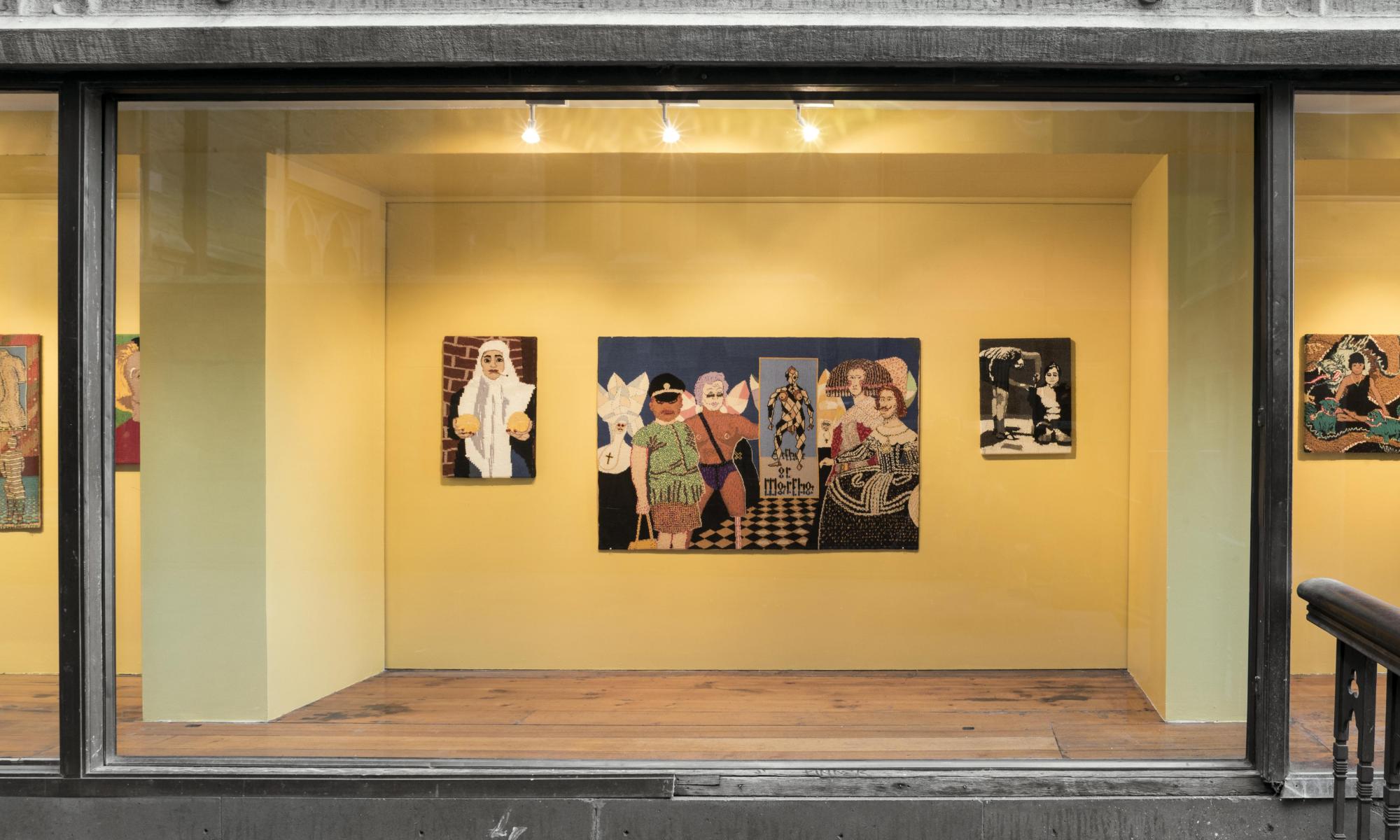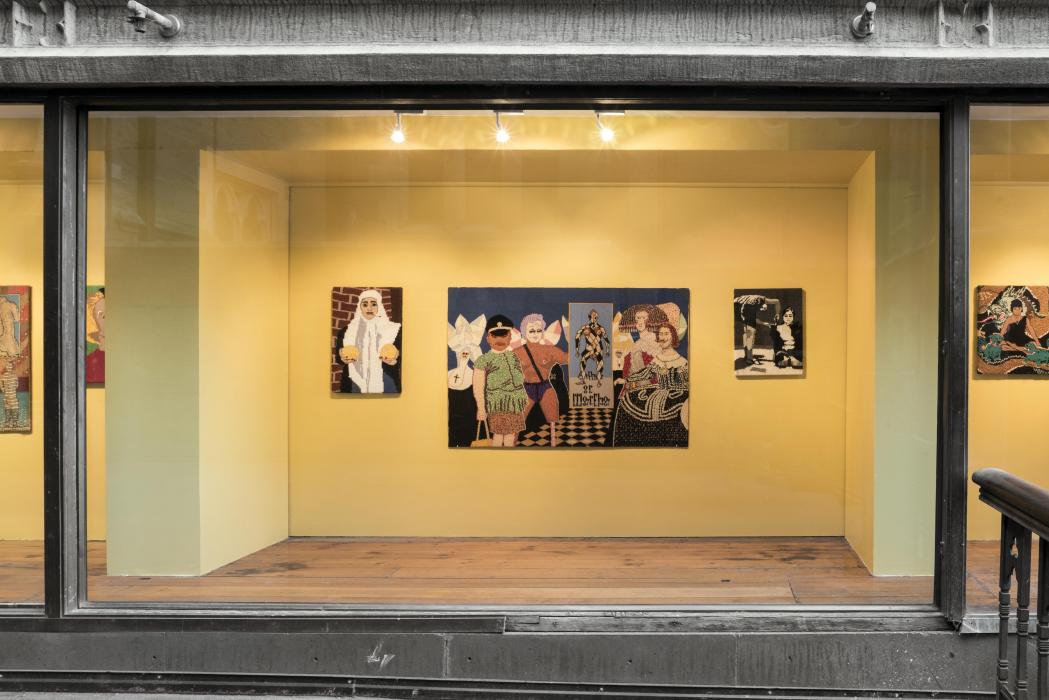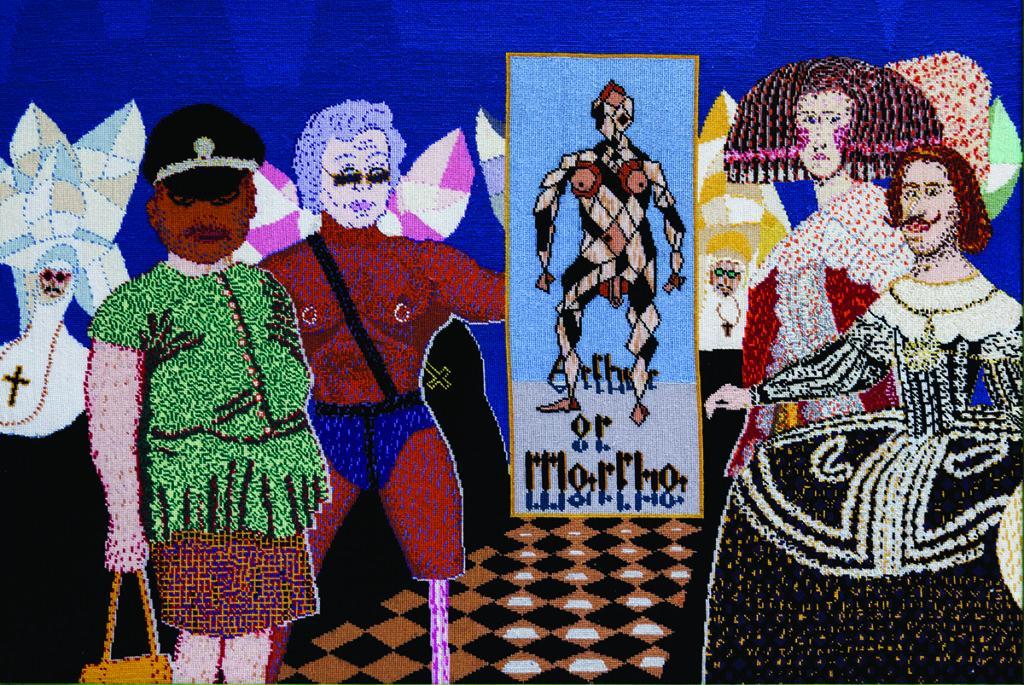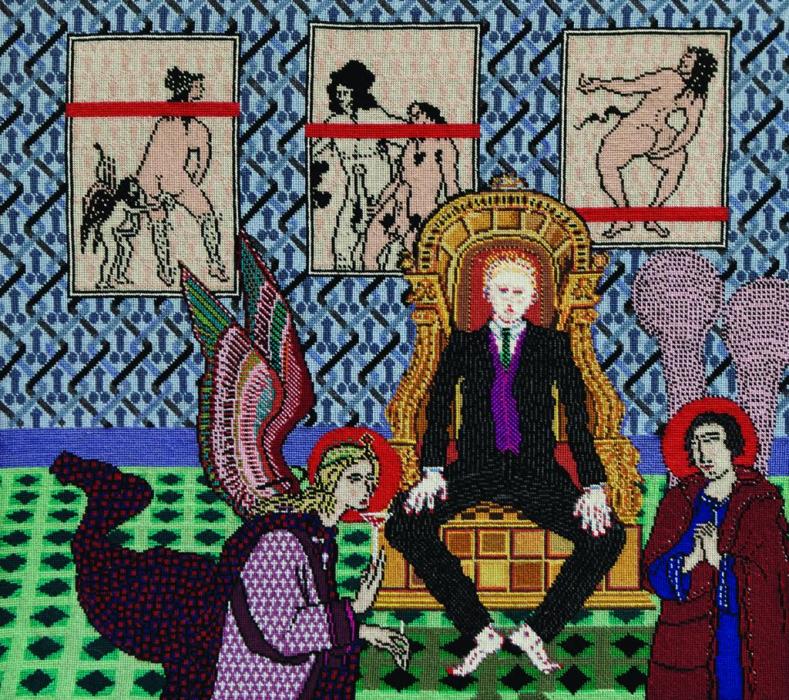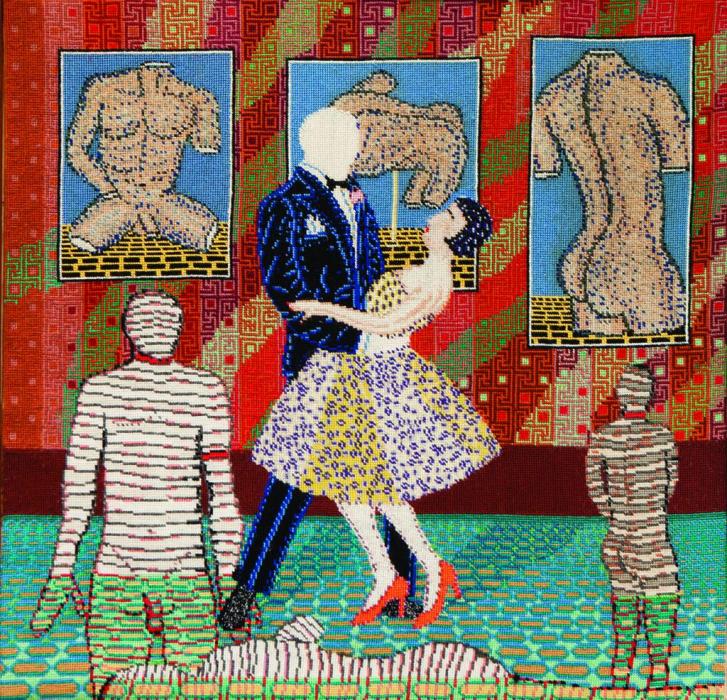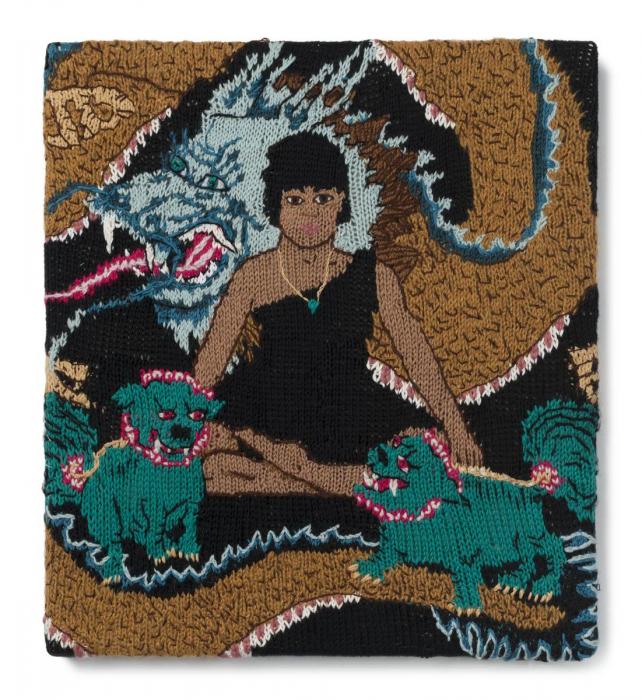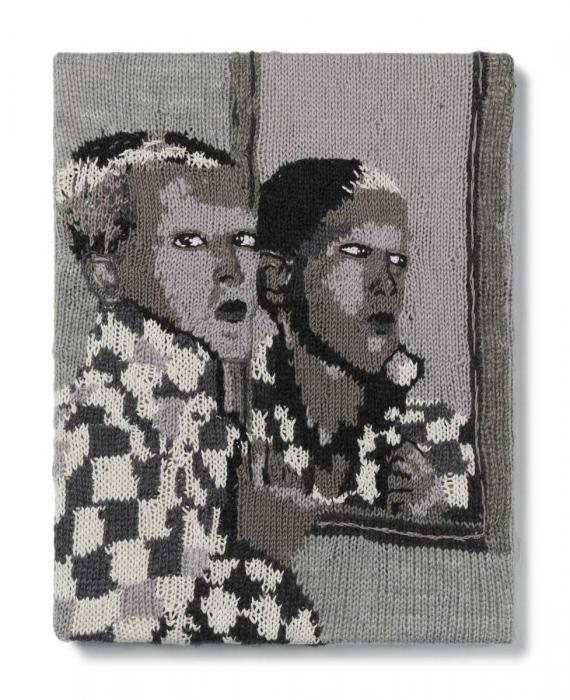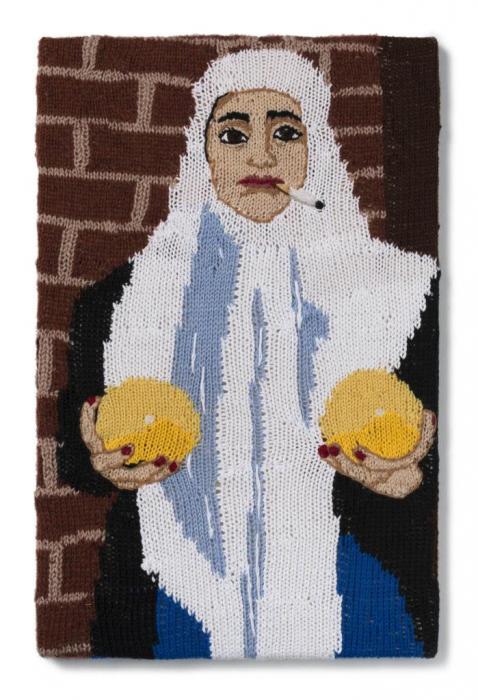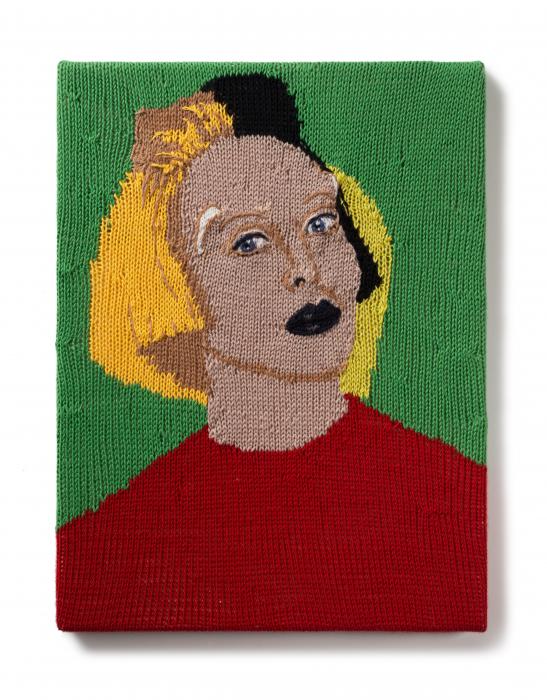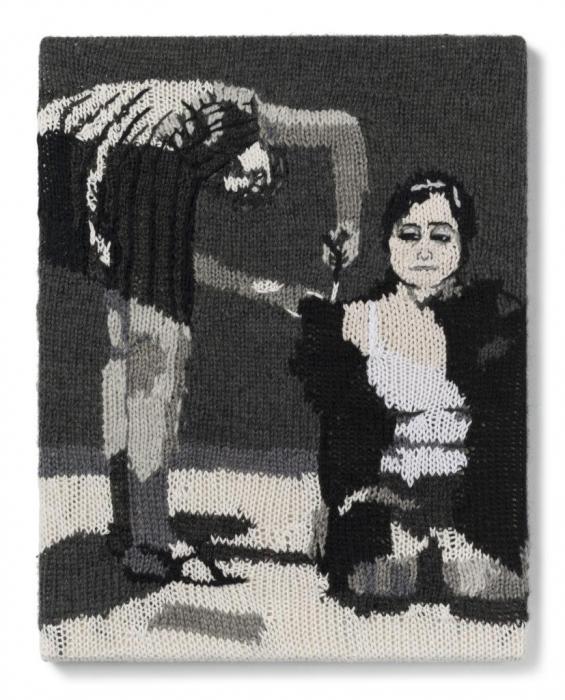Needleman, Feminist Fan, Curated by Louise Klerks
Needleman, Feminist Fan is not just a show about two artists exploring the oft-overlooked and undervalued practice of weaving and needlework. It is a succinct and tightly woven analysis of the ways in which artistic practice, gender, sexuality, and art history overlap within these two distinct bodies of work.
The artists, Kate Just and Robert Brain, come from different generations, yet both use an artistic technique that has endured for centuries. Robert Brain has employed needlework in his art since the 1950s, building his images freely, without a pattern, and ‘not a cross-stitch in sight’. [1] Kate Just has incorporated knitting into her practice since 2002, reframing the craft as an artistic, emotive and political tool. Both artists work to dismantle conventional perceptions of craft, particularly needlework, as a domestic hobby, traditionally conceived of as decoration and not as something to be hung on the walls of a gallery.
But hung they are, on the soft ochre walls of Chapter House Lane in Melbourne’s CBD, tucked down a laneway next to the imposing St Paul’s Cathedral. Brain’s work, in particular, takes on a decidedly wry stare as it gazes back at the spire and arches of the cathedral, with his humorous incorporation of religious and art historical iconography. Pulling threads of autobiographical material into his work while simultaneously layering the tapestries with art historical references is a consistent theme throughout Brain’s practice, evident in the work Robert with Girlfriend, Anne Padavini, Dancing in the Belvedere Ballroom, Hobart (2008-2012). The framed images of truncated male torsos in the background of the tapestry obviously reference classical and Renaissance sculpture, but Brain says, they also echo images that came to him in dreams, or more accurately nightmares, that he began to have in his late teens when his sexual awakening as a gay man occurred. [2] Brain’s tapestries span historical time periods, geographic localities, gendered divisions of labour, and art historical conventions, taking the practice beyond a domestic pastime and into the protracted time of history. But beyond all the seriousness of Brain’s engagement with art history and sexual politics, his works are clever, sardonic, and often very funny.
Kate Just likewise celebrates history and references art history in her series Feminist Fan, creating woven portraits of feminist figures she admires. Each portrait is accompanied by a testimony to why Just considers them a feminist hero on her Instagram page, @katejustknits. Using what is traditionally seen as a ‘women’s’ craft, Just elevates the practice of needlework in a similar vein to Brain’s humorous tapestries, and in doing so, elevates the profile of the women she admires. The series uses over 10,000 stitches and has taken over 80 hours to complete, making it a true labour of love. Just reinforces the lineage of feminism by drawing together temporally and geographically distinct artists, and highlighting their tenuous connections to one another. Like Brain, Just walks a line between the personal and the political, a boundary that has become the battleground upon which much of the war of feminism has been waged. These feminist heroes are public figures, their portraits are hung in public places, and the messages which they send to viewers, fans (and foes) around the globe are political, but Just imparts a personal note on each portrait with her message shared via social media.
Curator Louise Klerks' thoughtful and insightful pairing of these two artists has engendered a show that sheds new light on the art of needlework, and the potential it holds for sparking discourse not only around the medium itself and the way it is still being used in contemporary art but also around the issues that these two artists explore. Within the small scope of the space and the limited number of works (only nine in total), ideas, allusions, juxtapositions, and jokes explode off the walls and into public space. But despite the immediacy and urgency of the ideas conveyed in the works, there is a timelessness about them imparted by the labour-intensive nature of needlework, reminding us that some good things really do take time.
[1] Robert Brain, artist statement for An Autobiographical Tapestry, Bathurst Regional Art Gallery 13 May—26 June 2016.
[2] Robert Brain, ‘An Autobiographical Tapestry Mini Doco’, May 2016, https://www.youtube.com/watch?v=WZV2bxMcwjE; accessed 8 May 2018.

